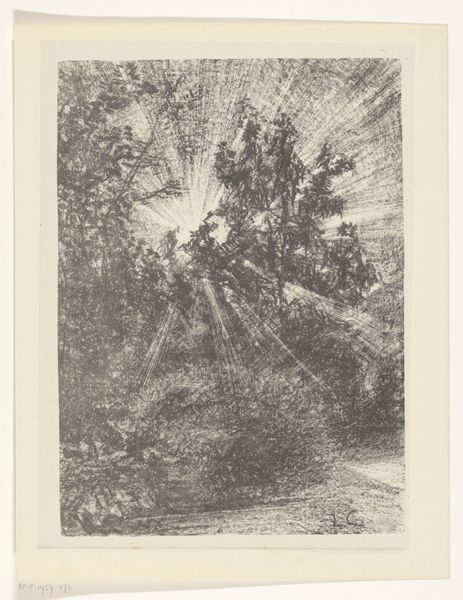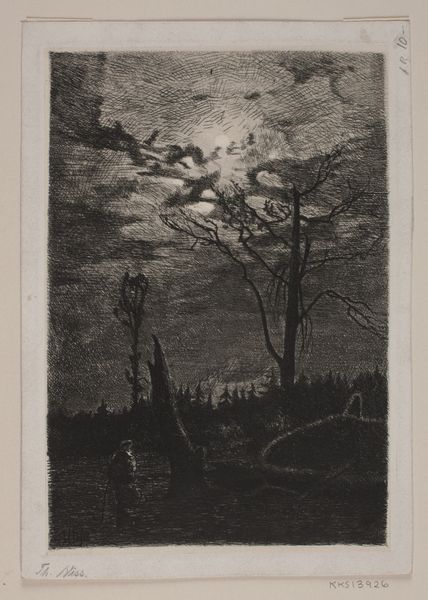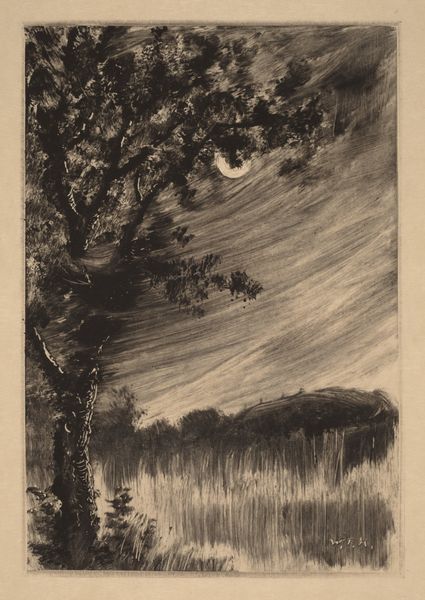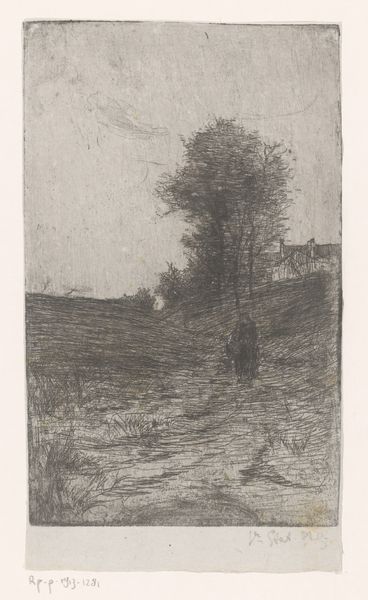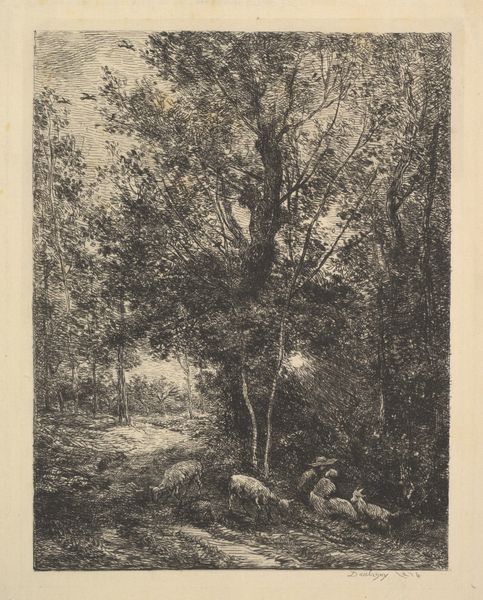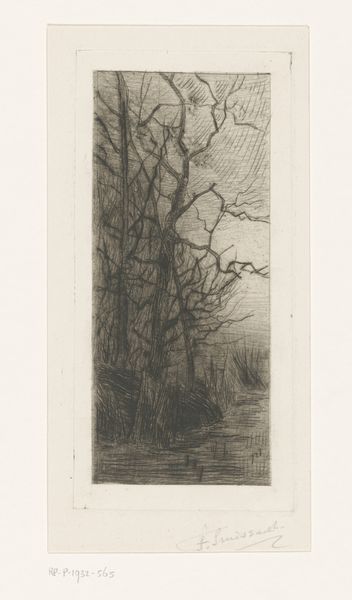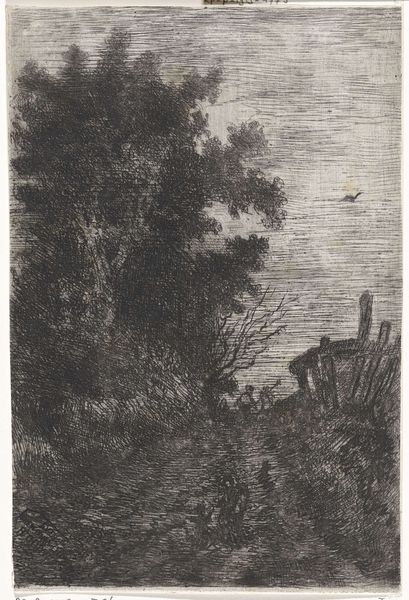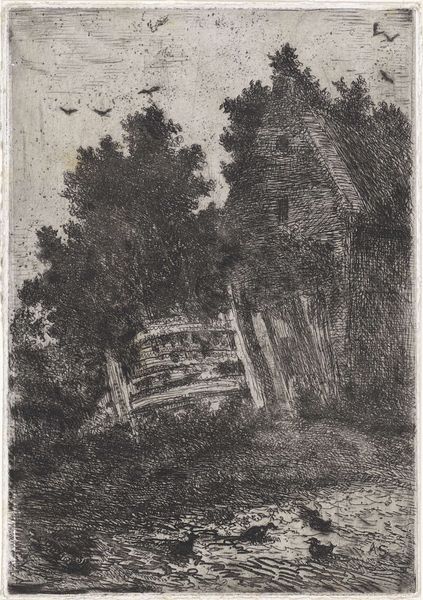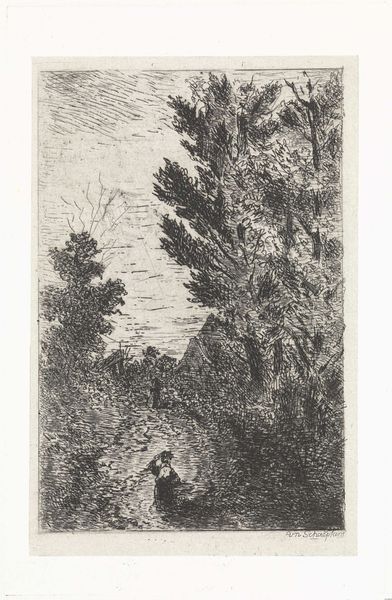
drawing, print, etching
#
drawing
# print
#
etching
#
landscape
#
line
Dimensions: Sheet: 8 5/16 × 6 7/8 in. (21.1 × 17.5 cm) Plate: 4 15/16 × 3 15/16 in. (12.5 × 10 cm)
Copyright: Public Domain
Editor: So, here we have a small etching called "Landscape," created sometime between 1875 and 1891. It’s currently held at the Metropolitan Museum of Art. The line work feels so dense and creates an almost ominous mood for me. What are your thoughts on how this work fits into the artistic landscape of its time? Curator: That 'ominous mood,' as you put it, is key. The late 19th century saw the rise of industrialization and urbanization, pushing artists to reconsider the role of nature. How did urban populations come to view "landscape," for instance, as a retreat, an escape, a space for contemplation, and perhaps even a battleground against industrial progress? Was this image part of shaping these shifting views? Editor: So, it wasn’t just about pretty scenery? The artwork almost feels like it's questioning that idea. Curator: Precisely. It’s not simply a depiction of a picturesque scene. It is an engagement with broader social issues and anxieties of the period. The dark and dense etching evokes a sense of mystery. Consider who had access to images like these? Was this art intended for the elite, reinforcing certain ideals about land ownership and leisure, or did prints democratize landscape imagery? Editor: That is such a valuable point, that access informs perception! And, thinking about the date, photography was developing during this time, too, offering another way to approach nature. Curator: Absolutely. How did the rise of photography influence the techniques and intentions behind landscape etching and printmaking? Were they competing or engaging in conversation? Perhaps artists working in etching sought to capture something different than photographs could – something more emotive or subjective. Editor: This discussion has made me look beyond the surface of just a pretty landscape and consider the social forces and debates at play. Thanks for broadening my perspective. Curator: And your fresh eyes on the ‘ominous mood’ brought to my attention the emotional aspect, making me think further about the experience of viewing the work back in the late 19th century.
Comments
No comments
Be the first to comment and join the conversation on the ultimate creative platform.
